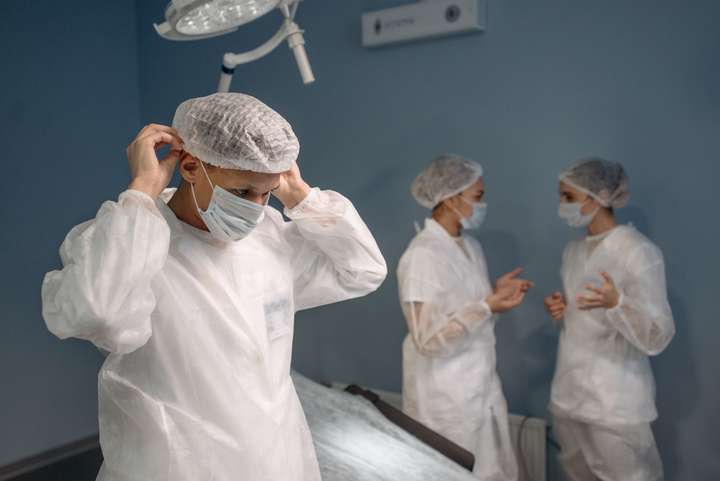Working in healthcare is one of the most rewarding professions. Healthcare providers change and save people’s lives every day. But if they do not tread carefully, saving others’ health might cost them their own. Healthcare professionals are at significant risk of developing the illnesses that have brought the patients to the hospitals. They are in direct and indirect contact with patients. If their health is at risk, how can they provide relief to the patients?

Healthcare workers need proper safety and protection. Without taking necessary precautions, they can develop illnesses leading to absenteeism. At the same time, other workers have to do their jobs, causing occupational burnout. Thus, a ripple effect starts when the health of healthcare personnel is not a priority. Covid-19 was also a tough time concerning healthcare personnel’s safety, and it has taught us the significance of safety measures for healthcare staff.
The following six ways can help organizations and workers ensure the health and safety of healthcare personnel.
1. Personal Protective Equipment
Personal protective equipment or PPE comprises gloves, gown, goggles, mask, disinfectant, sanitizer, and a face shield. PPE protects workers from any biological hazards by preventing bacteria and viruses from coming in direct contact with them.
There must be enough quantities of good quality online PPE shop available for all professionals relevant to the tasks they perform. It should fit well, and the staff must have the proper training to use it. Never undermine the importance of PPE, as it is the one thing that stands as a barrier between infections and doctors or nurses.
2. Mental Health of Healthcare Providers
Looking after the mental health of healthcare personnel is as important as caring for their physical health. They complete long shifts and deal with all kinds of illnesses and new viruses. Moreover, they have limited contact with and time for families and loved ones or socializing and work in fragile settings. All these have negative impacts on their mental health. If they are not mentally well, their physical health will soon deteriorate. They might develop hypertension, depression, stress, or anxiety issues.
These do affect not only their health but also their practice and professionalism. Make sure they get enough breaks and free time and that there is a place and time for them to rest. The healthcare facility must also ensure there is no bias in the working environment. to protect them from stress. Make policies for fair working hours, breaks, and reducing burden. Encourage the staff to avoid the blame game and have clear communication. Workers must have access to mental well-being and social support services, etc.
3. Regular Checkups
Healthcare workers are vulnerable to diseases like everybody else; they need attention and care too. Being healthcare professionals themselves, they often ignore their own health needs. Healthcare professionals should get checkups regularly because not everything falls under their specialty. They are likely to catch an infection or develop an allergy because of working in delicate and overwhelming situations. They need vaccinations, tests, preventive measures, and screenings like any other person.
4. Protection from Harassment and Discrimination
Out of the total healthcare workers, 70% are women. Yet only 25% of leadership roles belong to women in this sector. Women are underpaid in this field, and more than one million of them are unpaid workers in the health sector. They face sexual harassment and discrimination. 45% of nurses report that they are likely to face sexual harassment.
There need to be strict laws against harassment and discrimination. Moreover, these laws should be effectively implemented by the healthcare facility. There should be strict action against offenders to set an example. It is a basic necessity for students doing house jobs, women, and everyone to have a safe working environment.
5. Advocating for Their Rights
The Healthcare sector is different in every country, and so are the facilities provided to workers. We often see workers protesting for their rights in one country or another. Healthcare workers are often underpaid, do not get facilities, have long working hours, face professional bias, etc. these factors lead to strikes. And when they are on strike, no one is there to help the patients.
It is high time to make unions for healthcare workers to have a say in decisions. There should be advocacy groups, and powerful unions for them to advocate for what they want or think is wrong. County leaders, private sector partners, and national institutions must collaborate with healthcare personnel’s unions to peacefully restore their rights, solve problems and avoid strikes and protests.
6. Collecting Data
Gathering and recording data is the key component here. It will help both patients and workers. Making a protection policy is not a one-time thing. Its implementation needs to be ensured by policymakers, who need to check whether it is providing the desired results or needs adaptation. This may include gathering data on the success of protective policies, the effectiveness of PPE, potential threat to doctors during treatment, finding out which machinery is not up-to-date and causes errors during treatments, etc. And the data will map out the required upgrades.
Collect data on populations at the risk of diseases. The data insights enable forecasting the possible timing and magnitude of disease outbreaks, the number of healthcare professionals required to deal with the situation, the amount of PPE required, etc. This way, both the population and healthcare personnel can prepare themselves with precautionary safety measures beforehand.
Conclusion
A profession in healthcare is both rewarding and demanding. Sometimes, healthcare workers have to put their health at risk to save others. The healthcare sector can function properly only when the personnel is safe and sound. Healthcare personnel remains exposed to all kinds of diseases. Even if a disease might be incommunicable, some treatments can transfer bacteria and viruses to workers. Thus, a good healthcare system ensures not only the patient’s but also its personnel’s safety.





